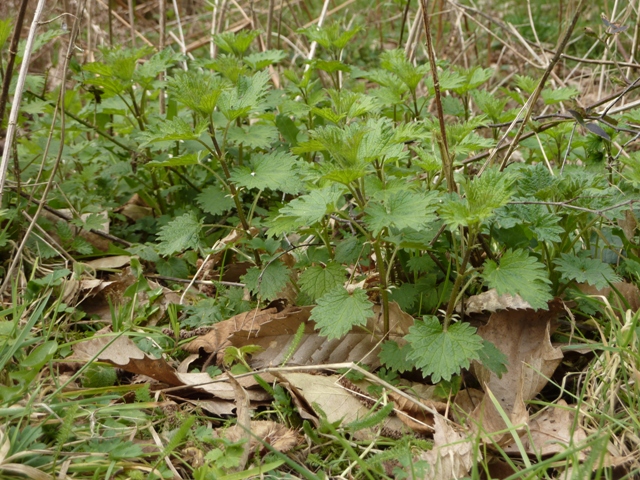The nettle is a most useful plant for many different purposes. The Nettles are part of the Nettle family (Urticaceae) and has some other native genera as well, which you will find out below.

This time of the year the nettle is just emerging again from its wintersleep!
It is family number 54 in Stace and besides the genus Urtica, which has 2 native species, it also has 2 other genera + species occurring in the B.I. namely the useful Parietaria judaica (Pellitory-of-the-wall) and an ornamental, low creeping plant with very small leaves, sometimes seen as a houseplant, called Soleirolia soleirolii with the very funny common name: ‘Mind-your-own-business’.
I have seen this plant much more frequently in the last few years in Walsall gardens too and many gardeners find this a menace!
“ The 3 genera appear very different vegetatively, but are characterised by their inconspicuous, unisexual flowers with 4 perianth segments, 4 stamens, 1-celled superior ovary with 1 ovule, 1 style and densely branched stigma”. The Common Nettle (Urtica dioica) is very variable, especially in leaf shape and hairiness, stingless, subglabrus and monoecious variants are known.” (Stace)
The other native nettle is not as well-known and is the annual Small Nettle (Urtica urens). Apparently this is an archaeophyte and often occurs in cultivated and waste ground. As with many leafy plants, they are often an indicator of good soil.
I use colour coding for easy reading! Blue background is general interesting info (although I hope you find it all interesting!!). Green is about all the uses except for medicinal uses or if there is a warning in which case I use a pink background
Continue reading “The very useful Nettle family or Urticaceae.”